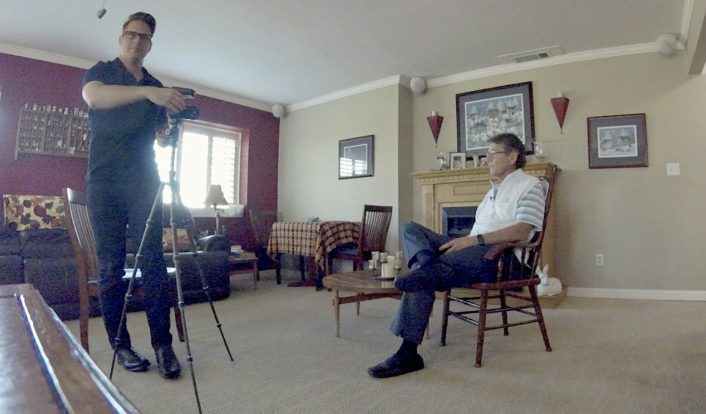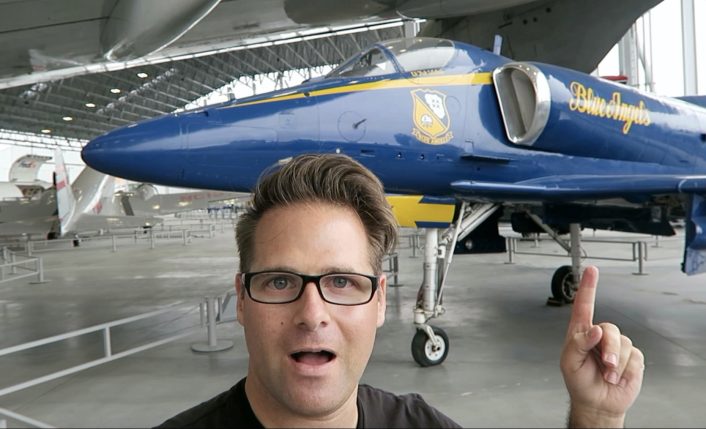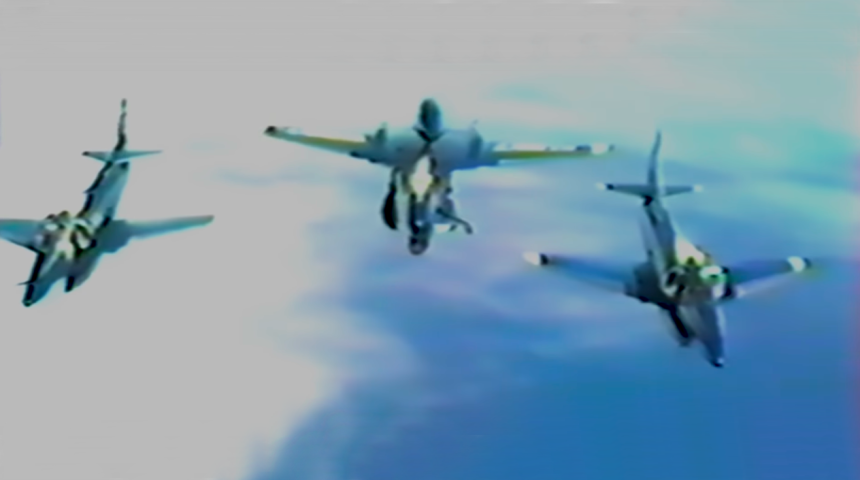Producer Ryan Nothhaft Provides Unique, Insider’s View of Classic Navy Demo Team.
If you’re like all of us at TheAviationist.com, after the “Top Gun: Maverick” delay and the “COVID-19 2020 Air Show Season That Never Was” you’re ready to see some real demonstration flying.
Film producer Ryan Nothhaft has given us a beautiful retrospective to tide us over during the airshow season delay. His excellent documentary filmmaking also provides an enhanced appreciation for demonstration teams like the U.S. Navy Blue Angels. It’s a perfect insight to build understanding and reverence for the big U.S. demo teams during this down time.
Director Nothhaft’s newly released documentary, “Blue Angels 1982: Rise Above” chronicles the U.S. Navy Flight Demonstration Team, The Blue Angels, through their 1982 show season. The documentary is especially interesting because of its intimate interviews with former Blue Angel demo pilots from the 1982 Season.

I grew up on the Blue Angels. The first time I saw them they were flying the Grumman F11F Tiger. In 1982, the Blues had transitioned from the F11F Tiger to the massive F-4J Phantom II and then, in 1974, the team switched to the smaller, more agile Douglas A-4F Skyhawk.
The Skyhawk was the last aircraft flown by the Blue Angels before the introduction of fly-by-wire flight controls and their change to the F/A-18 Hornet. Veterans of the ’82 Blue Angels team speak in reverence of the Skyhawk’s manual flight controls, light weight, simplicity and agility. The Blue Angels’ Skyhawk years represented a golden era in flight demonstration.
The Skyhawk era depicted in Nothhaft’s film is unique in flight demonstration. Some Blue Angel airshows were flown for small local crowds with as few as 10,000 spectators. Today, crowds of over 100,000 are common at airshows headlined by the Blues. Flight demos were lower, closer to the crowd, smokier and more sensational in the early ‘80’s. The crowds were different too, with a strong contingent of former and current military and aviation enthusiasts as the general public’s interest in the armed forces had been fatigued by the long years of the Vietnam conflict. This was also the era before the first “Top Gun” film, so the glamour of modern Naval jet aviation had not yet had the marketing hype of Hollywood and Tom Cruise. It may have seemed like a quiet time in the Blue Angels’ history, but Nothhaft’s skillful documentary proves quite the opposite.

The year 1982 was also a tragic year in U.S. military demonstration flying. Both major U.S. demo teams suffered fatal accidents. The historical context of the documentary addresses the tragedy of the January 18, 1982 Thunderbird diamond crash at Indian Springs, Nevada (now Creech AFB) in which four Thunderbird T-38 Talon aircraft crashed, killing all four pilots. Later that year, on February 22, 1982, Blue Angel #5, Lt. Cmdr. Stu Powrie, Lead Solo, was killed when his Skyhawk struck the ground during winter training at Naval Air Facility El Centro, California just after a dirty loop.
As a result of the two fatal 1982 accidents, there was a Congressional push to end both the Thunderbird and Blue Angel demo teams. Thankfully, the move was never adopted. There have since been two long term interruptions in Blue Angel and Thunderbird display seasons during the government sequester in 2013 and the ongoing cancellation of airshows during the global COVID-19 pandemic.
In addition to this fantastic documentary, Ryan Nothhaft also maintains a fantastic website at www.blueangelphantoms.com. The site provides what is likely the best historical repository of Blue Angel team member listings and some fantastic media focusing on the past Blue Angel teams. This site is worth a look.
Director Ryan Nothhaft’s, “Blue Angels 1982: Rise Above” is not only a much-needed dose of airshow vibes during the pandemic lock-down, it’s also a retrospective that will make the demo teams feel all the more valuable once the pandemic is over. That makes its release date as perfectly timed as it is masterful documentary filmmaking.









